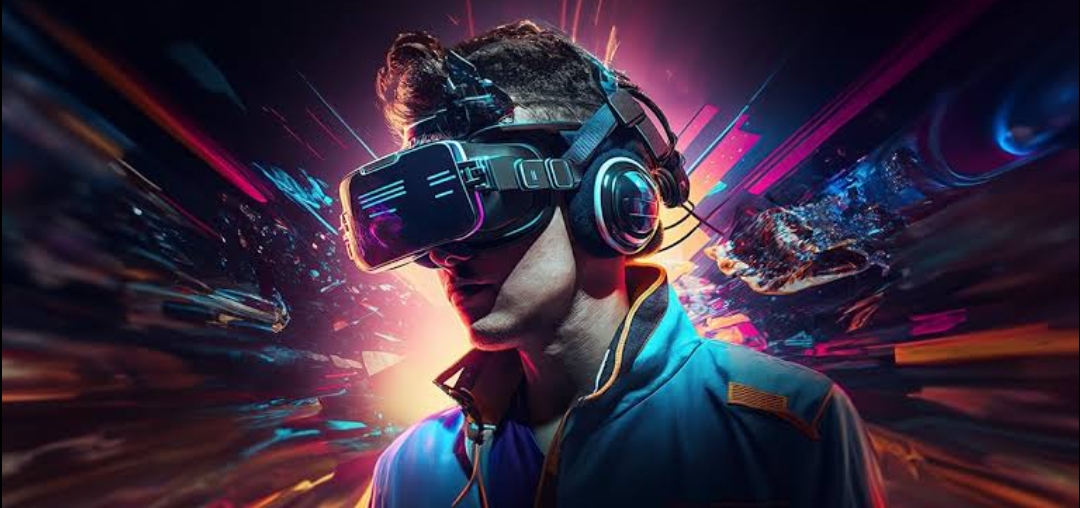In the vast and dynamic universe of video gaming, Artificial Intelligence (AI) has long been at the core of player experience, facilitating everything from enemy behavior to the intricate mechanisms within sandbox worlds. However, in this modern age of gaming, the role of AI has expanded beyond the mere coding of Non-Playable Characters (NPCs) to something more complex and innovative. The AI behind our virtual co-stars, like the technology from talkie ai, has come a long way since the days of simple pathfinding and basic decision trees.. Now, it’s a key player in crafting rich, immersive gaming experiences that feel more like interactive movies than traditional video games character AI.
The Dawn of NPCs and Early AI
In the early days of gaming, NPCs were often little more than a few lines of code. They would perform rudimentary tasks, offer a limited number of pre-recorded lines of dialogue, and function as little more than obstacles or quest triggers. This simplistic design was pragmatic given the limitations of hardware and the nascent state of AI technology.
The term “NPC” itself is directly linked to this initial level of capability. They existed to populate game worlds and provide some semblance of life and purpose to the game environment. However, it didn’t take long for developers to realize that improving the AI of these characters would greatly enhance a player’s immersion and enjoyment.
A Shift in Perception: NPCs as Unique Personalities
With advancements in technology and more sophisticated programming tools, developers began to infuse their NPCs with unique personalities and behaviors. Rather than being a homogeneous backdrop to the player’s actions, NPCs started to distinguish themselves based on their roles, backstories, and the actions they took within the world.
This shift was subtle at first, with NPCs engaging in scripted interactions and perhaps a more advanced pathfinding algorithm that allowed for a degree of ‘independent’ movement. Still, these early attempts hinted at something bigger that was to come—the emergence of NPCs that could react dynamically to player choices and the events of the game world.
The Rise of Branching Dialogue and Reactive NPCs
Interactive storytelling in games took off with the advent of branching dialogues and reactive NPCs. Notable titles like the “Mass Effect” series and “The Elder Scrolls” franchise showcased NPCs that remembered player actions and responded to them in more than just a superficial manner. This was achieved through the implementation of AI that tracked player decisions and adjusted NPC interactions accordingly.
For instance, in “Mass Effect,” a player’s choices could lead to characters becoming allies or adversaries, completely altering the game’s narrative. This level of complexity required sophisticated AI that could handle a plethora of potential player actions and their consequences.
The ability to create meaningful relationships and emotionally resonant experiences was a game-changer for the medium, leveraging AI to bring storytelling to new heights.
Dynamic Worlds and Procedural Generation
Another significant leap in character AI came with the advent of dynamic worlds and procedural generation. Titles like “No Man’s Sky” and “The Sims” showcased AI that could create and maintain complex ecosystems within the game world. In “No Man’s Sky,” for example, every NPC operated within a system of economy, politics, and social dynamics, influenced by both the player and each other.
Games incorporating procedural generation utilized AI to create entire AI-driven civilizations, each with its unique history and culture. This was a monumental achievement, as it allowed for the creation of worlds that felt alive and evolved without the need for constant developer intervention.
Emergent Behavior and Player Choice
Emergent behavior, the concept of AI characters making unscripted decisions based on their programming and environmental stimuli, became a focus of many developers. By giving NPCs a set of rules to follow and the ability to adapt within those parameters, games could produce scenarios that were never explicitly designed or anticipated.
This kind of AI empowered players with near-limitless possibilities, as they could find new ways to interact with the game world and its inhabitants. The success of this approach is evident in titles like “Hitman” and “Red Dead Redemption,” where players could witness dynamic reactions and scenarios unfold based on their actions and the world’s AI.
The Era of Machine Learning and Deep Learning
In recent years, machine learning and deep learning have started to influence character AI in ways previously unimaginable. These technologies allow game AIs to ‘learn’ from player behavior and adapt on-the-fly, almost like a human would.
For example, in “Middle-earth: Shadow of Mordor,” the “Nemesis System” uses procedural generation and machine learning to create unique enemies that remember their past encounters with the player, developing strengths and weaknesses based on the outcome. This results in a personal and evolving nemesis that makes every playthrough unique.
This level of AI complexity is still in its infancy, with most game applications focusing on specific, contained systems like enemy behavior or conversation engines. However, as machine learning becomes more accessible, we can expect to see this kind of dynamic, learning-based AI becoming more prevalent across all aspects of character interaction in games.
The Road Ahead: AI and the Future of Character Design
Looking to the future, AI’s role in gaming character design will continue to grow. With the advent of cloud computing and the processing power it affords, developers can create even more sophisticated AIs that handle more data and variables than previously thought possible.
Current research in AI is also exploring the concept of emotional intelligence, with the aim of developing characters that not only react to the player but form complex emotional states based on a range of stimuli. Imagine a game where every character—good, bad, or indifferent—has their thoughts, feelings, and internal conflicts that they need to manage, all updated in real-time. This is the kind of AI that could redefine what is possible in the medium, allowing for emotionally rich and deeply human interactive experiences.
The Impact on Gameplay and Game Design
The evolving nature of character AI has had a marked impact on gameplay and game design. Games can now offer more nuanced and complex moral choices, create more lifelike and engaging characters, and craft worlds that feel genuinely lived-in. The metrics for success in game design have changed as well. Longevity and replayability are now just as important as a game’s initial playthrough, and AI plays a central role in delivering these experiences.
Of course, with increased complexity comes a greater development cost and potential for bugs and glitches. Balancing AI systems to avoid predictability and repetitive behavior is an ongoing challenge. However, the benefits far outweigh the risks, as audiences become more discerning and demand deeper, more engaging experiences from their games.
Conclusion: The Character AI Revolution
The evolution of character AI in gaming is nothing short of a revolution, one that has transformed the medium into a playground for human emotion, decision-making, and storytelling. From the humble NPCs of the past to the simulated societies of the future, AI’s role in gaming continues to expand and redefine the boundaries of what is possible.
With advancements in technology and a more sophisticated understanding of complex systems, developers are just beginning to scratch the surface of what character AI can achieve. The potential for emotionally resonant and deeply personal gaming experiences is higher than ever, and the future of character AI is brimming with exciting possibilities.
As we move forward, it is essential to remember that the power to shape this future lies not only in the hands of developers but also in the voices of the players. In a medium that is ultimately a shared experience between creators and their audience, the true evolution of character AI will come from a deep understanding of human nature and a willingness to explore the boundaries of our creativity.






